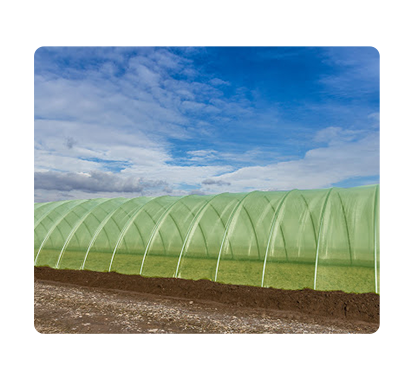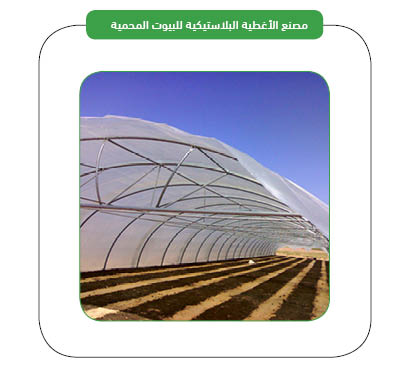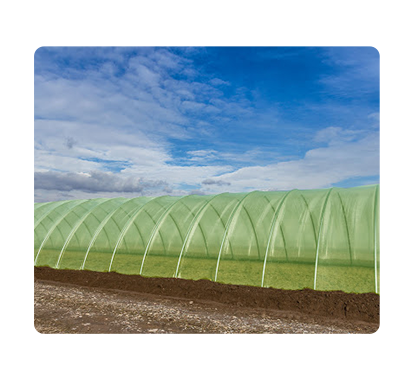The project is to establish a factory for plastic covers for greenhouses, which produces various products of plastic covers for greenhouses in different shapes; (spherical dome – axial and semicircular – semi-cylindrical – straight-headed gothic arch – symmetrical slope – house with a sloping roof – gable shape), which are used in many market sectors of the agricultural sector, and the factory targets; (public gardens – fields – private gardens – reclaimed lands), due to the increase in demand for these products, and greenhouses are used to produce vegetables or ornamental plants within tunnels or greenhouses or large greenhouses made of light plastic, to provide favorable growth conditions, and to protect crops from weather fluctuations and sometimes from pests, which helps to produce plants in their off-seasons in great abundance, which increases production and reduces costs with the increase in crops in the markets throughout the year, and from the feasibility study of the project of a plastic covers factory for greenhouses, it becomes clear that the project is a good investment opportunity that achieves high financial and economic returns.

Mashroo3k Company for Feasibility Studies and Business Plans undertakes the task of preparing a feasibility study for the plastic covers factory project from the (marketing – technical – financial) aspects, and analyzes the main idea of the project, its field, components and nature, and analyzes the market size, competitors, products and the marketing gap between supply and demand for these products. After conducting the market size analysis, it appears that there is an urgent need in the markets for the project products represented in; plastic covers for greenhouses in their various shapes; (spherical dome – axial and semicircular – semi-cylindrical – straight-headed gothic arch – symmetrical slope – house with a sloping roof – gable shape). <The factory provides its products of plastic covers for greenhouses with the highest possible level of quality and at appropriate competitive prices, relying on the latest technological means used in the field of the project. It also relies on a team of highly qualified administrators and technicians to provide products with a distinctive character for the various targeted sectors, which are: public parks – fields – private parks – reclaimed lands. The project seeks to acquire a sufficiently high percentage of the marketing gap between supply and demand for products, and seeks to benefit from the significant increase in demand rates for these products in the targeted markets. <Mashroo3k Company for Feasibility Studies and Business Plans, in the process of preparing a feasibility study for a plastic covers factory project for greenhouses, searches local and international bodies, institutions, ministries and government sources specialized in the field of preparing feasibility studies, in order to provide a feasibility study (marketing – technical – financial) that is compatible with the international standards followed in the field. The company is distinguished by having a team of expert and specialized cadres and a distinguished group of consultants. Through Mashroo3k Company, a team of technicians is used to provide production lines, raw materials and technical requirements for equipment and machinery necessary to operate the project from approved global resources and sources. All of these requirements are brought according to the scope of the project, taking into account the country in which the project will be implemented.




The Kingdom of Saudi Arabia has paved the way for development with its ambitious Vision 2030, which aims at economic diversification, the renaissance of non-oil sectors and increasing the contribution of the private sector to GDP, and this can only be achieved through the renaissance of industry and mining as two main tributaries in major economies, and the Kingdom is determined to increase their participation in its GDP by about 15%. When talking about industry in the Kingdom, it should be noted that it was not born out of the moment, but rather it has been extended and rooted since the discovery of oil in the Kingdom in the late thirties of the last century. Over the decades, the Kingdom spared no effort to develop its industry; it established the Industrial Development Fund (1974), the Royal Commission for Jubail and Yanbu (1975), and SABIC in 1976. The roles and tasks undertaken by these institutions and the programs they worked on to grow the industrial sector and develop its performance and working mechanisms are no secret to anyone. As a result of the efforts exerted years ago in this direction, the number of factories in the Kingdom today has increased to more than 10,000 factories. We, mashroo3k, believe in the importance of the industrial sector and its role in driving the economy, so we will present its most important indicators below so that anyone wishing to invest in it can be aware of them:
